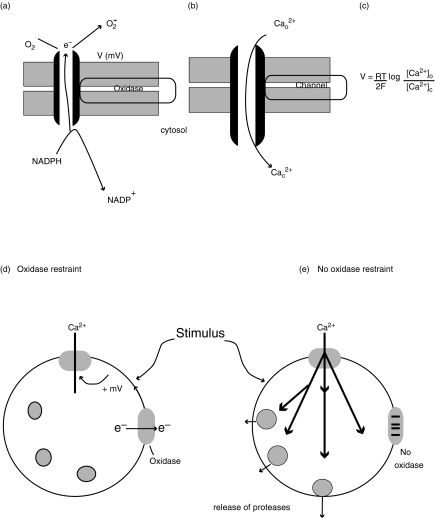Fig. 1.
Electrogenic effect of the oxidase on Ca2+ influx. The figure shows the schematic lay-out of (a) the oxidase, transporting electrons across the phagosomal or plasma membrane and generating a transmembrane potential (V) and (b) the open Ca2+ channel with Ca2+ ions moving against the electron flow. These opposite effects balance when the Nernst equation (c) is true, where R,T and F are the gas constant, the absolute temperature and the Faraday constant, respectively; 2 is the valency of Ca2+ and the square brackets denote the equilibrium concentrations of Ca2+ outside the cell and in the cytosol (denoted by the subscripts o and c, respectively) at the transmembrane potential, V. (d) shows the effect of a stimulus on an oxidase-competent neutrophil, causes Ca2+ influx, which activates outwardly directly electron transport via the oxidase. This results in an increase in membrane potential towards the positive, limiting Ca2+ influx. (e) shows the effect on an oxidase-defective cell, the Ca2+ influx restraint is lost and more Ca2+ enters the cell causing other cellular events including the release of proteases from stored granules to occur.

